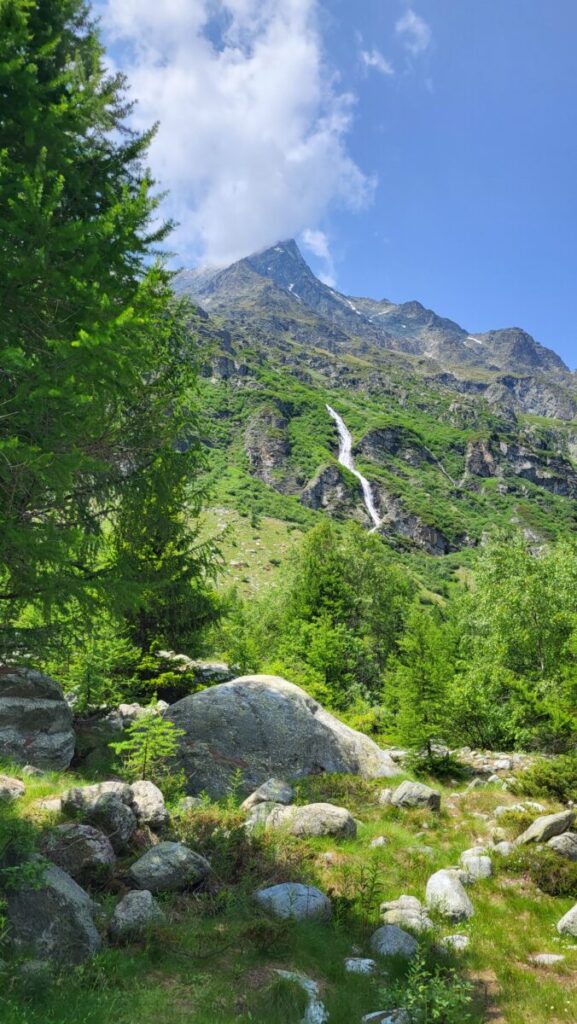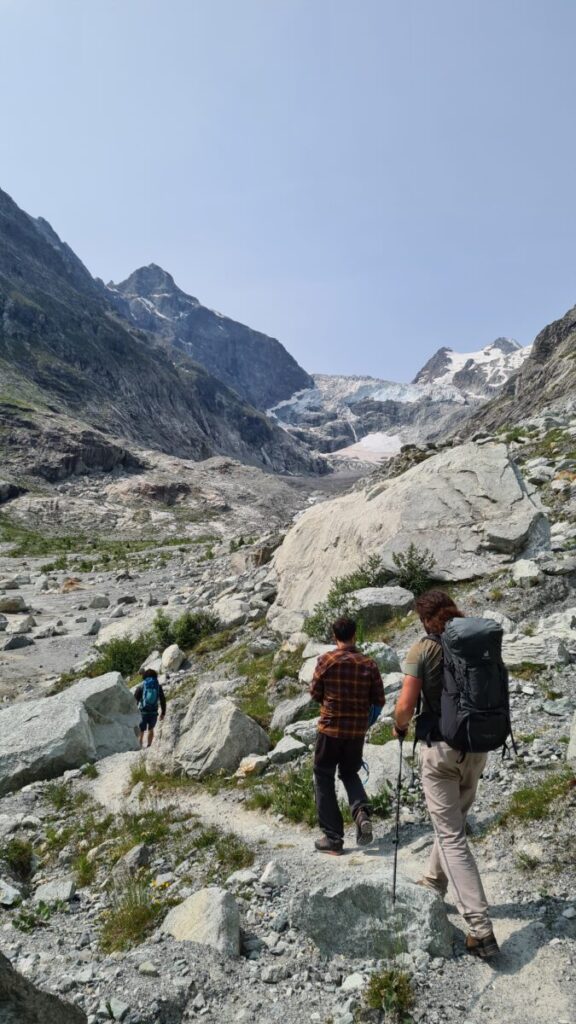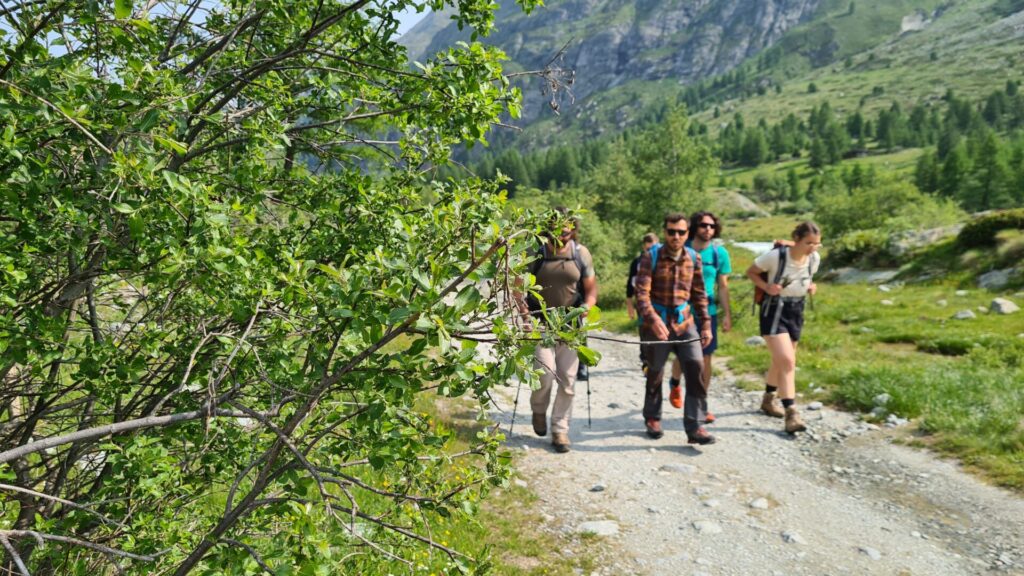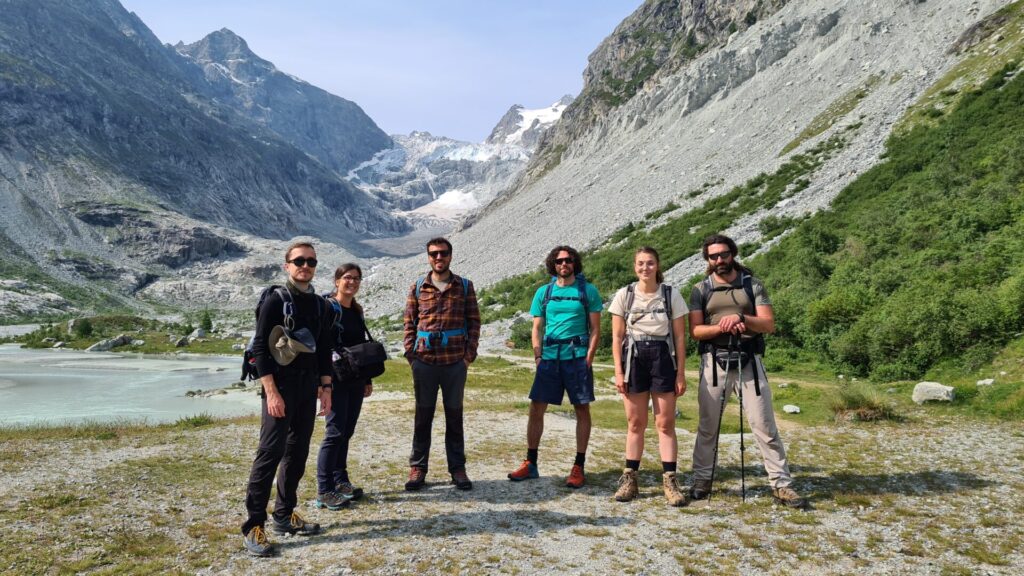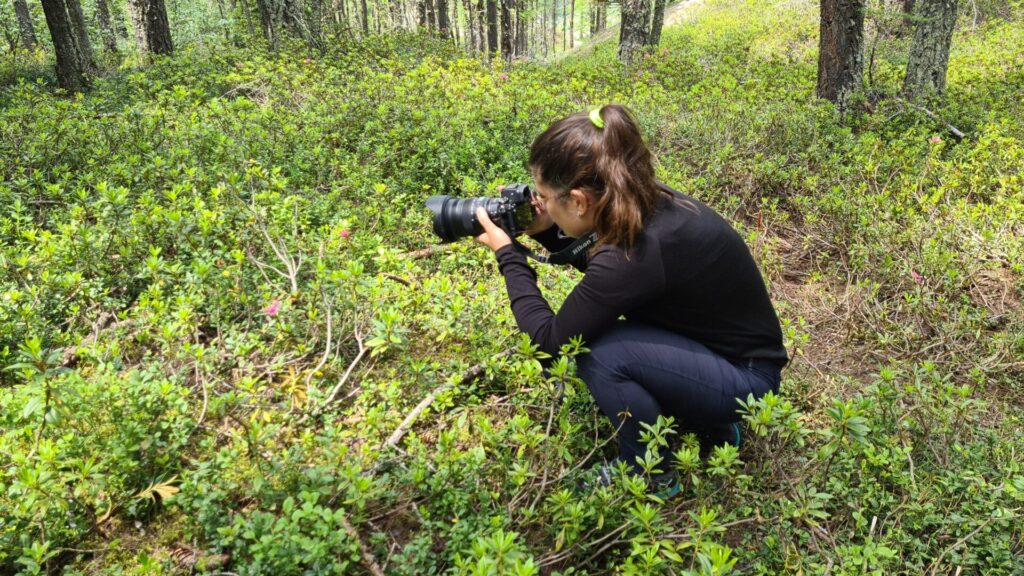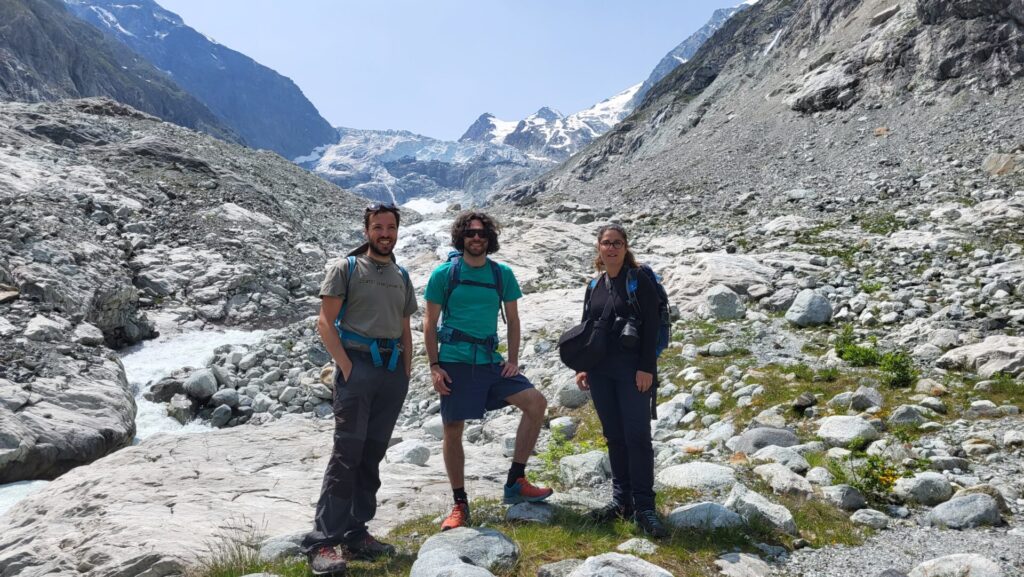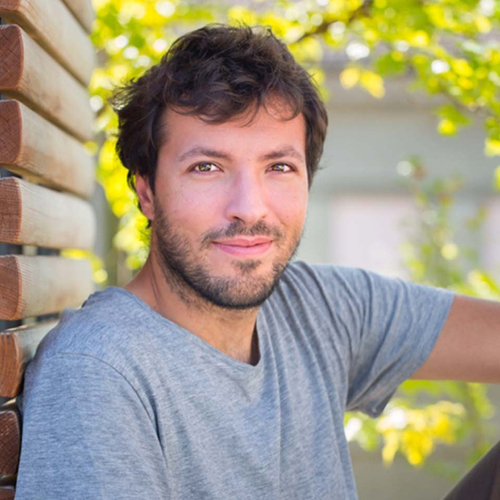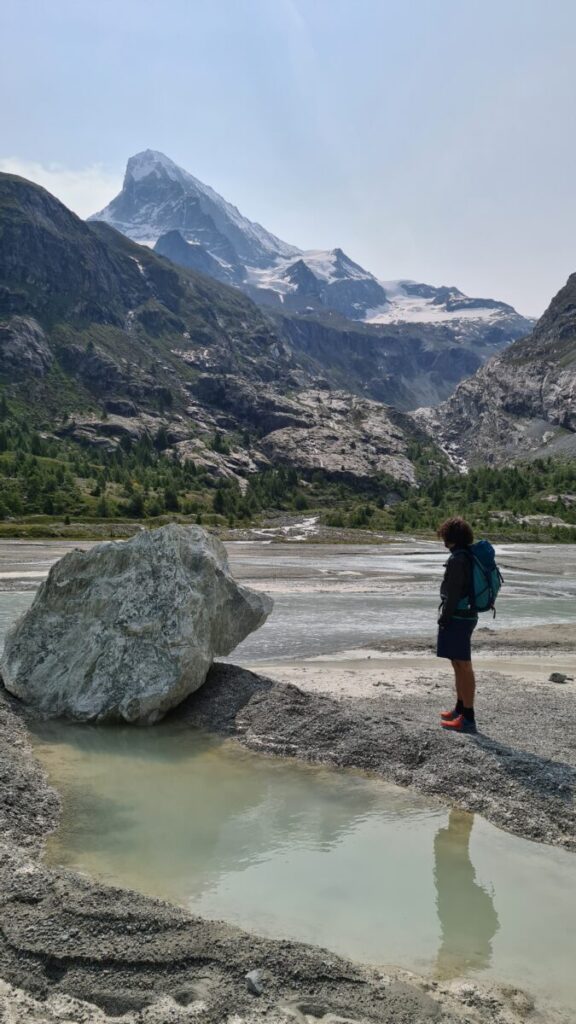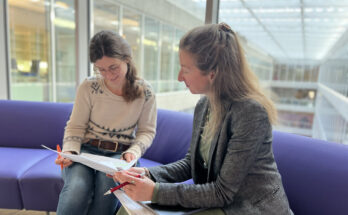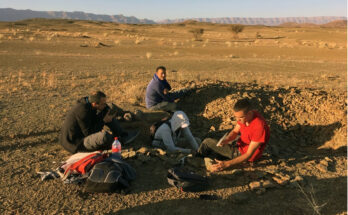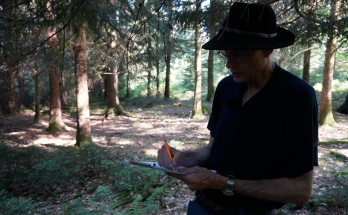Cette publication est également disponible en :
![]() Français
Français
Glaciers are the guardians of an entire ecosystem, and their disappearance caused by global warming will lead to a dramatic decline in biodiversity.
In the field, the members of the Biodiversity Change Group are studying and documenting the impact of glacier retreat on biodiversity and ecosystem. Meet the group.
“It may seem counter-intuitive, but glaciers and their surroundings provide very favourable conditions for biodiversity,” explains Gianalberto Losapio, PI at the Institute of Earth Surface Dynamics from the Faculty of Geosciences and the Environment (FGSE). “With the disappearance of glaciers, we are losing plant species, some of which may have strong medicinal potential, but also the fauna such as pollinators and predators associated with them”.
With his Biodiversity Change research group, Gianalberto Losapio is spending part of the summer in the field at Ferpècle in Valais, documenting and studying the impact of glacier retreat on biodiversity and ecosystem functions. For several weeks, Bachelor and Master students, doctoral candidates and scientists from various countries are carrying out insect and plant surveys, analyzing soil and gas emissions, and parametrizing models to predict the distribution of species and conserve biodiversity.
“Overall, we know that melting glaciers initially lead to an increase in biodiversity, with the arrival of pioneer plants and the colonization of insects. But over time, only few competitive species gain the upper hand such as larches and rhododendrons which ultimately dominate the scene”, explains Losapio. “This mechanism is already clearly visible to the nake eye. One of the missions of our group is to study ways of preserving this biodiversity”.
This is the case of Luca Eiholzer, who is doing a master’s degree in environmental sciences at the FGSE. Equipped with a square meter and a GPS, he lists the presence/absence of targeted species – i.e. bioindicator species such as trees, moss, etc.– in around a hundred randomly distributed points in the proglacial margin. This data is then used to draw up an assessment of the current situation and projections for the distribution of species, with the help of machine-learning algorithms. “We hope that this information will be useful for the authorities, helping them, for example, to define areas to be protected. At the same time, being out in the field allows me to come face to face with the difficulties of collecting data. It’s very instructive.
”Eléa Pierre, a Master student specializing in geosciences, ecology and the environment, is interested in the influence that the presence of livestock can have on glacier margins. “I’m carrying out plant surveys around the Zinal, Arolla and Ferpècle glaciers,” she explains. “The idea is to compare changes in biodiversity depending on whether or not there is grazing around the glacier.
There is a lot of uncertainty around the effects of livestock in these novel ecosystems.
But according to our knowledge, large herbivores shape their environment, and not the other way round, through their diet, their dropping, trampling and their general behavior. These data could therefore be used to develop different conservation scenarios for sustainable management as these pastures are currently used by local population”.”
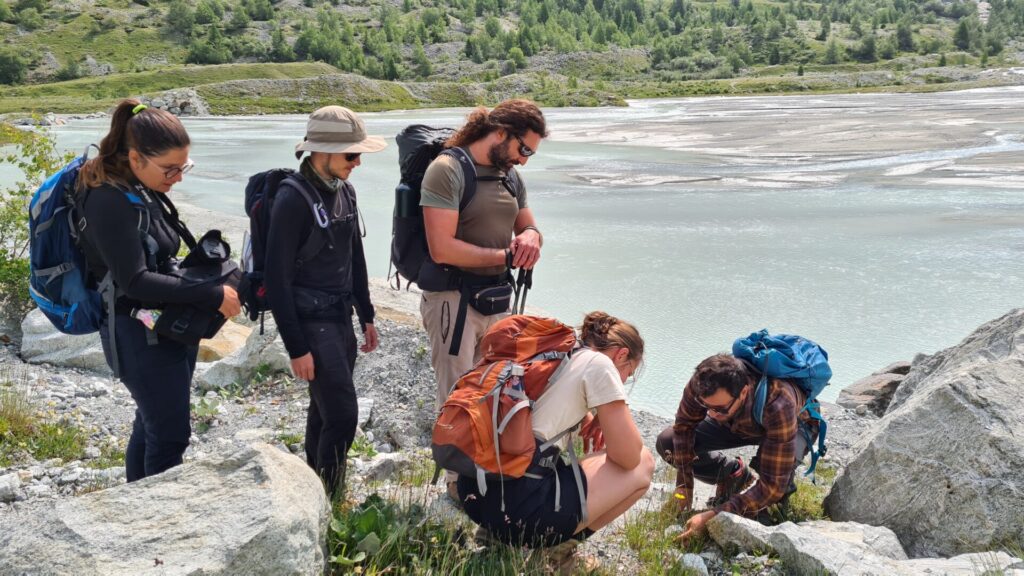
Preparing for professional life
Data collection generally lasts all day and is carried out by around fifteen people. The members of the group then meet up in a refuge, where they have their meals and spend the night. “Fieldwork is a great experience because, even though everyone is working on a specific project, we can talk to other researchers, help each other and work together,” says Eléa Pierre. Gianalberto Losapio adds: “We want the projects to be carried out independently, from start to finish. The idea is to prepare students for professional life.”
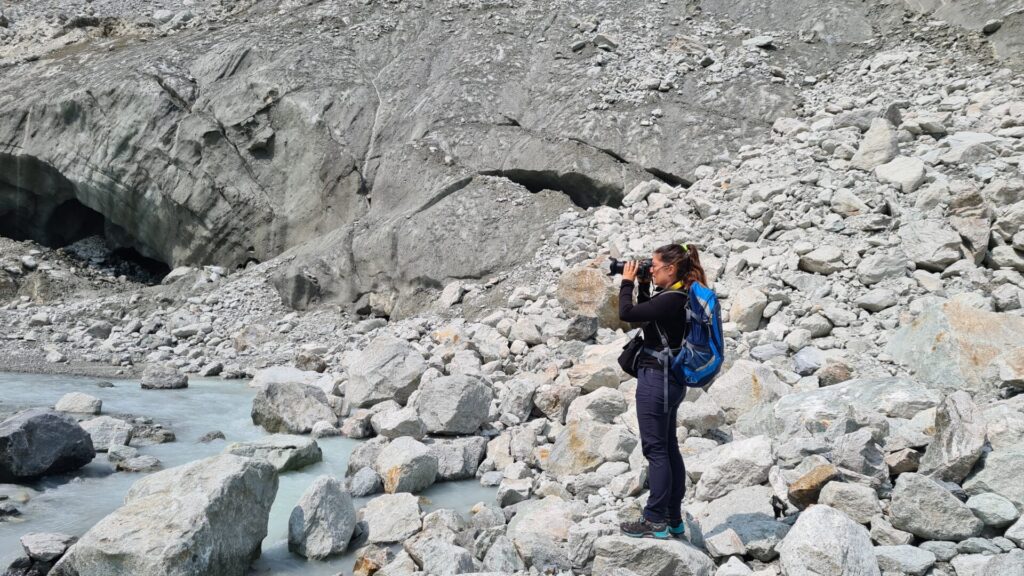
Art meets science
The work and research carried out at Ferpècle also include an artistic component. Gianalberto Losapio is collaborating with visual artist and artistic researcher Maëlle Cornut, who is following the group in the field. Funded by Pro Helvetia and the Swiss Polar Institute, the art-science project, which will run for almost two years, focuses on the consequences of the extinction of glaciers on ecosystems, but also addresses broader concepts such as ecofeminism, ecology decolonization and climate justice. It will include videos superimposing micro images of plants and insects and landscape images to show the interconnections between the various scales. “So far, we’ve done a lot of research and shared our practices and ideas. I’ve now started the production phase, installed several cameras traps, and the concrete part of the project is about to begin”, she explains.
